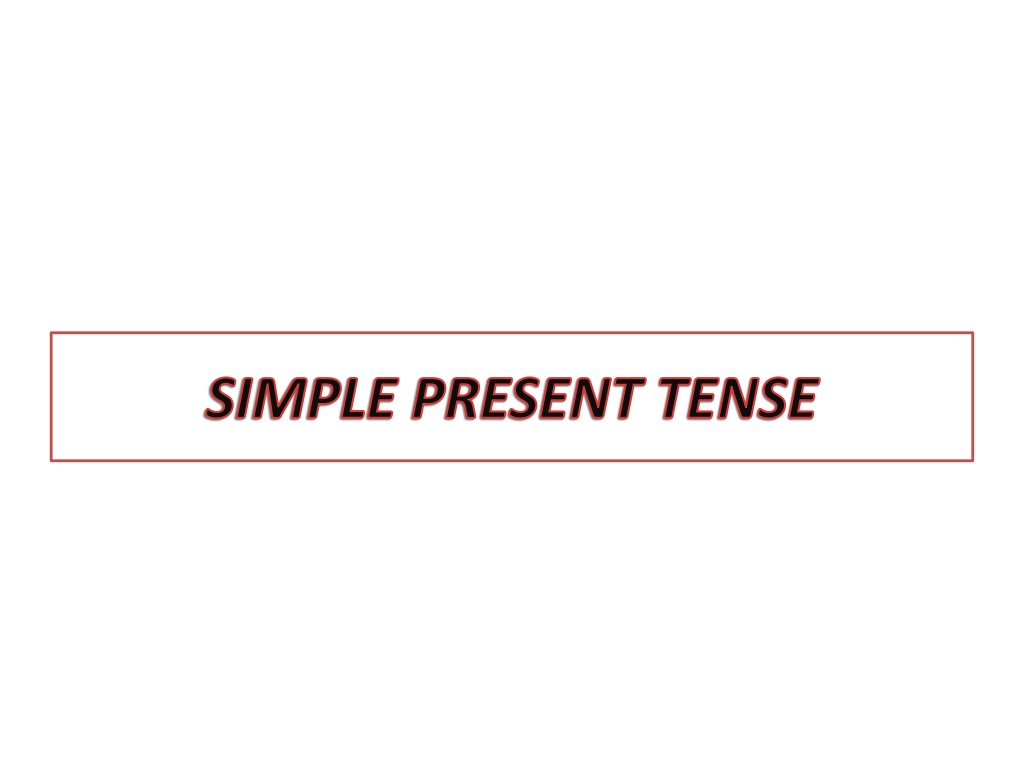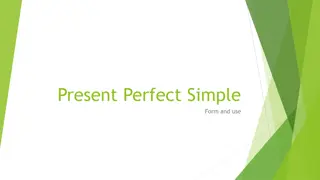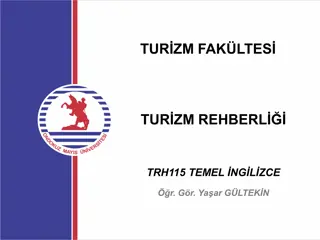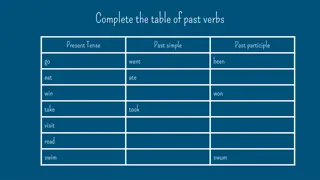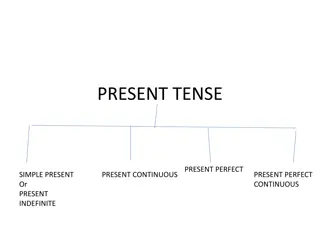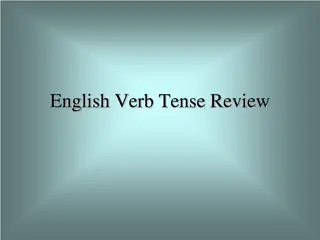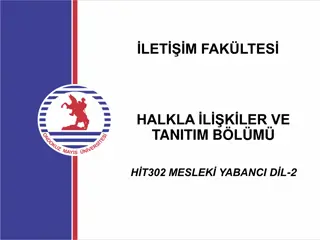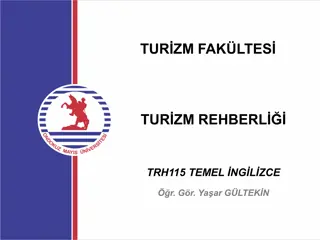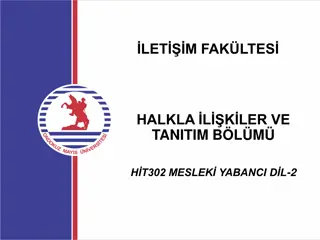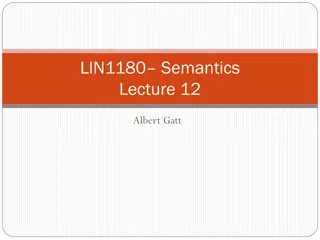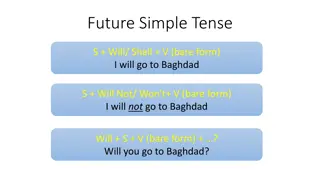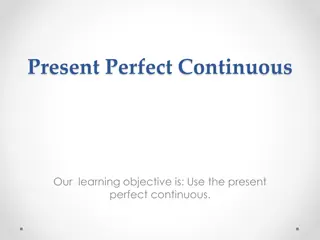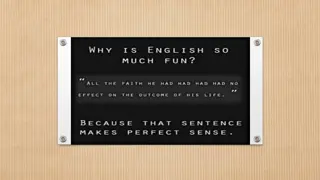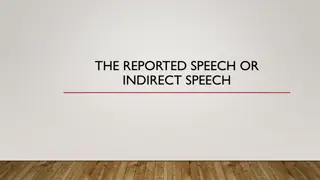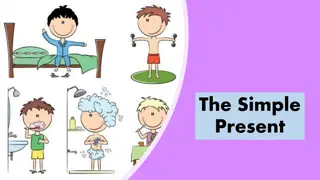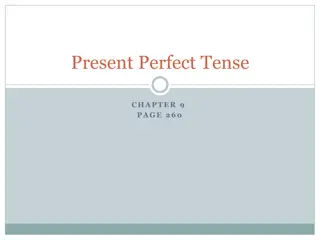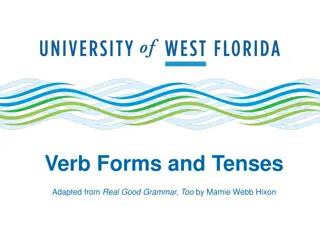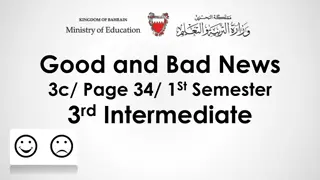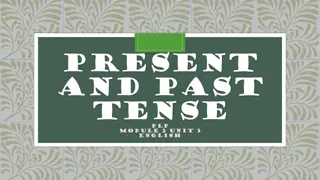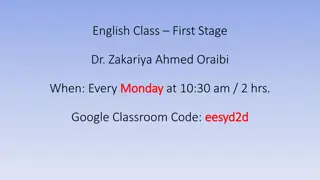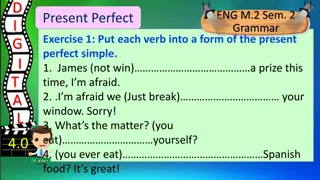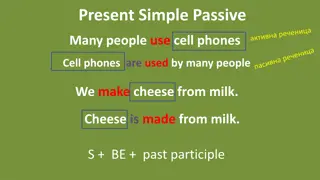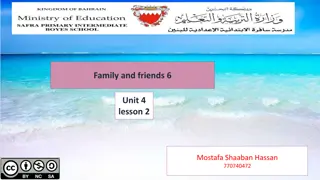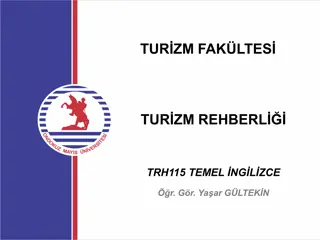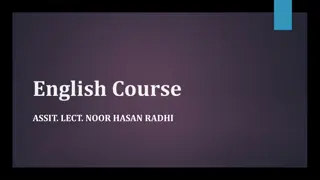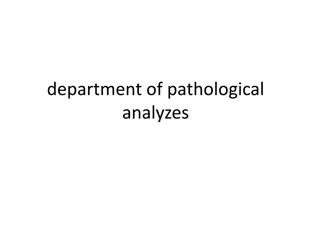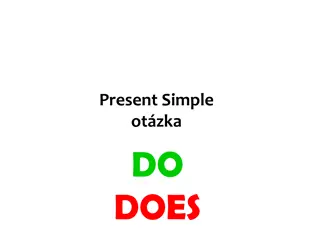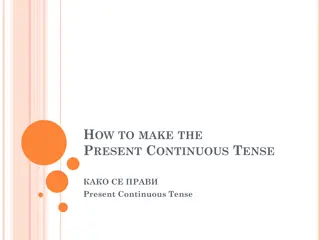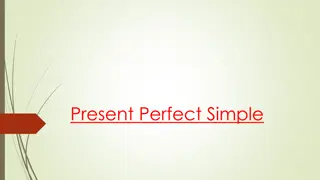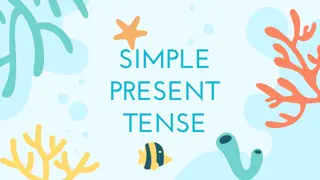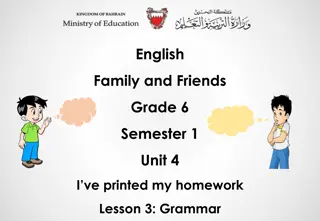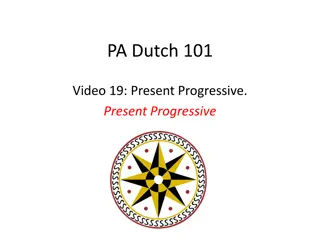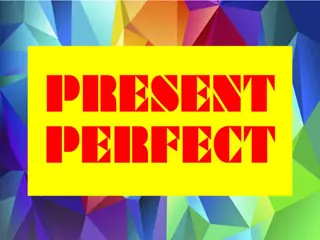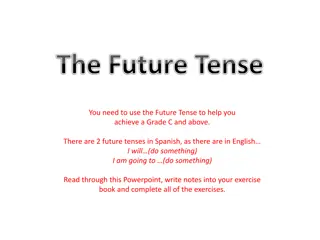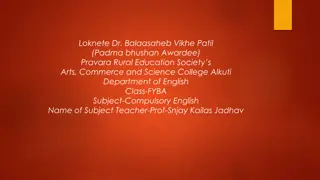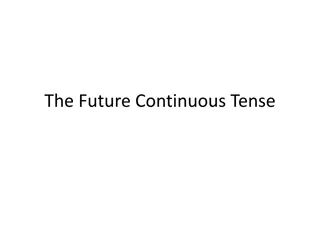Understanding Simple Present Tense with Examples and Formation
Simple Present Tense is used to talk about actions that happen regularly or are true in the present. This tense is used for statements of fact, daily habits, schedules, opinions, and more. The formation includes affirmative, interrogative, and negative sentences. Examples and usage scenarios help in grasping the concept effectively.
Download Presentation

Please find below an Image/Link to download the presentation.
The content on the website is provided AS IS for your information and personal use only. It may not be sold, licensed, or shared on other websites without obtaining consent from the author. Download presentation by click this link. If you encounter any issues during the download, it is possible that the publisher has removed the file from their server.
E N D
Presentation Transcript
Simple present is used to talk about an action which happens on a regular basis. We use the present tense to talk about something that is true in the present: EXAMPLES I m nineteen years old. He lives in London. I m a student. NOTE:TEACH THE KID THE MEANING OF SIMPLE PRESENT TENSE.
Simple present tells something that happens again and again in the present: I play football every weekend. NOTE:TEACH THE KID THE MEANING OF SIMPLE PRESENT TENSE.
NOTE:TEACH THE KID THE RULES AND FORMATION OF OF SIMPLE PRESENT TENSE.
NOTE:TEACH THE KID THE RULES AND FORMATION OF OF SIMPLE PRESENT TENSE.
Usage of Simple Present Simple present tells something that is always true: EXAMPLES The adult human body contains 206 bones. Light travels at almost 300,000 kilometres per second. NOTE:TEACH THE KID THE USAGE OF OF SIMPLE PRESENT TENSE SENTENCES.
FORMATION OF SIMPLE PRESENT TENSE Affirmative I think You think he, she, it thinks we think Interrogative Do I think ? Do you think? Does he, she, it think? Do we think? Negative I do not think. You don't think. He, she, it doesn't think. We don't think. NOTE:TEACH THE KID THE FORMATION OF OF SIMPLE PRESENT TENSE SENTENCES IN AFFIRMATIVE,INTERROGATIVE AND NEGATIVE STATEMENTS.
USE OF SIMPLE PRESENT The use of the simple present: The simple present is used: to give your opinion - I like ice cream. I don't like spicy food. to talk about schedules - The library opens at eight. It doesn't open at 7. to talk about daily habits (routine actions)- Sara eats a cheese for breakfast every day. She doesn't eat cereal. to give facts - The earth circles the sun. The moon doesn't circle the sun. NOTE:TEACH THE KID THE USAGE OF OF SIMPLE PRESENT TENSE SENTENCES.
Nancy and James are good friends .They speak good German . Nancy works in a restaurant downtown and James is a librarian . The children play in the garden every weekend . James and Nancy visit church together every Friday. NOTE:MAKE THE KID TO READ THE ABOVE PARAGRAPH THAT CONSISTES OF SIMPLE PRESENT TENSE SENTENCES.
CHOOSE THE CORRECT OPTION 1. She always ________ in dance competitions.(participate/participates) 2. Mohan ________ every morning.(jog/jogs) 3. I _______ in France.(live/lives) 4. Jane ______ in a multinational company.(work/works) 5. Doctors ______ that junk food be avoided.(recommend/recommends) 6. He _____ angry very quickly.(get/gets) NOTE:HELP THE KID TO CHOOSE THE BEST OPTION GIVEN WITHIN BRACKETS.
FORM SENTENCES a) b) . c) . NOTE:HELP THE KID TO FORM SENTENCES WHICH IS RELEVANT TO PICTURES ABOVE.
a)My mother is a teacher. She _______ English. b)Rohan is my best friend. He _______ soccer. c) _____ you know the way out of this building? d) What ______ your father do? e) You can't ______ without water. NOTE:HELP THE KID TO FILL IN THE BLANKS WITH THE APPROPRIATE WORD
